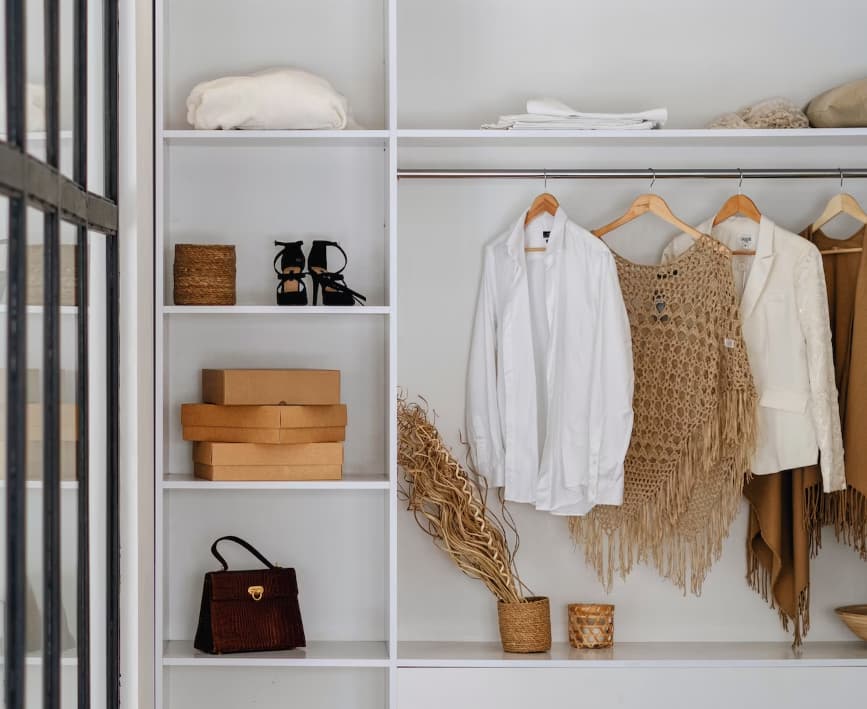Why Sustainable Fashion Matters More Than Ever?
Sustainable fashion is all about creating environmentally friendly clothes that are fair to those who make them. This means paying living wages, reducing CO2 emissions and pollution, and ensuring that all garment workers are safe.
It can also mean choosing natural fabrics, using a secondhand wardrobe, and mending and making alterations as needed.
Why Sustainable Fashion Matters More Than Ever?

-
Reduce Waste
What is sustainability in fashion? Sustainability in fashion is a broad term encompassing a wide range of practices that aim to reduce the environmental and social impact of the fashion industry. The fashion industry’s ecological footprint is a major concern. It accounts for between 4% and 10% of the world’s carbon emissions. This is largely due to unrelenting pressure for unsustainable growth and consumer demand for cheap, fast fashion.
It also doesn’t help that three-quarters of the shoes and clothes we produce are in landfills. Sustainable brands prioritize reducing waste at every step of production. For example, they may use 3D printing to work out details digitally before making them physically, minimizing the need for trial and error, or use deadstock fabrics (materials that were created but never used and would otherwise be thrown away).
They might also reduce waste by using non-toxic dyes and make their clothing closer to home to avoid shipping from overseas. You can do your part by buying fewer garments and caring for them well so they last longer. Washing your clothes less often can also lower their CO2 and water consumption. And, if you’re feeling ambitious, try to buy secondhand clothing, which can drastically reduce your environmental impact.
-
Reduce Carbon Footprint
Unlike fast fashion brands that churn out cheap, low-quality clothes at breakneck speed, sustainable fashion produces garments that last and can be worn for years. This helps cut CO2 emissions, reduces pollution and waste, and ensures that the people who make our clothes are paid a fair wage and given safe working conditions. Choosing organic fabrics like cotton and wool grown without harmful pesticides, dyes, and recycled materials also helps with sustainability.
Bamboo fabric has become popular as it is environmentally friendly and luxuriously soft. 3D printing is another sustainable technique that allows designers to work out garment details digitally, reducing the need for trial and error during production.
Buying pre-owned clothing, mending and repairing worn clothes, and making simple alterations to modernize a piece also minimize the amount of textile waste in landfills.
In addition, limiting the number of garments in your closet by washing them less frequently can extend their lifespan and reduce energy, climate change, and water use by 20 to 30 percent.
-
Save Money
As the summer heat fades and professional women fall back into work routines, many focus on sustainable fashion. Instead of slavishly following the latest trends, they choose clothing made from natural and renewable fabrics like organic cotton and linen, hemp, and Tencel. They also ditch cheap synthetics and opt for high-quality pieces engineered to last longer. Quality over quantity is the best way to save money while supporting sustainability.
Instead of a fast-fashion dress that must be replaced within a year, a sustainable blouse or skirt will last a decade or more. That investment piece may cost more in the short term, but it will be cheaper than repeatedly buying new clothing.
Another great way to save money and support sustainability is to shop secondhand in physical thrift stores or online marketplaces. Alternatively, you can host a clothing swap with friends to have fun while adding new wardrobe staples that are ethically and sustainably produced.
Finally, you can buy clothing from brands that prioritize sustainability by using sustainable materials, paying fair wages, and utilizing eco-friendly production processes.
-
Support Local Communities
While the fashion industry may be a leading contributor to environmental and social problems, it is only sometimes top of mind for shoppers. This is a problem because consumers value sustainable fashion and want to support brands that produce ethical and environmentally friendly clothes. Sustainable fashion often involves locally sourced materials, reducing carbon emissions from long-distance shipping.
It also supports local economies through jobs and investment in communities. Moreover, it encourages responsible care and repair of clothes so they last longer, thereby lowering the need for replacements. New fashion brands recognize the need for sustainability and are beginning to incorporate it into their designs, operations, and supply chains. This change is driven by the fact that most consumers, especially millennials and Gen Zers, want to purchase more sustainably.
The best way to support sustainable fashion is to become a conscious consumer. You can start by following fashion-focused accounts. You can also support nonprofits and thrift stores that make a difference by volunteering or contributing to their efforts.
-
Support the Environment
The fashion industry has a high environmental impact thanks to its heavy water consumption (from dyeing to washing) and the way it uses excessive packaging materials during transport. Sustainable brands try to minimize byproduct waste and shipping materials during manufacturing and reduce the amount of plastic they use in transporting goods from manufacturer to warehouse and then on to consumers.
Another aspect of sustainability in fashion is using eco-friendly and organic fabric fibers instead of synthetic ones that require a lot of energy to produce and create microplastics that end up in our water supplies.
This includes organic cotton and linen, recycled fabrics and wool, and other renewable natural biodegradable fabrics. The best way to support the sustainable fashion movement is by shopping for clothing that meets your style needs, budget, and lifestyle and buying it from a brand that prioritizes environmentally friendly production processes.
You can also be a digital activist by commenting on the fashion brands you love and asking about their practices, whether they pay living wages, and how they’re trying to lower their environmental footprint.
